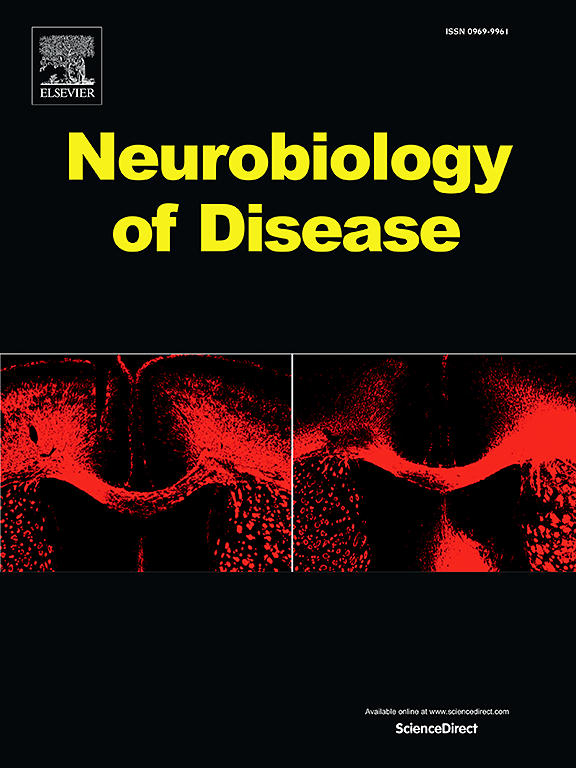Stimulation of Purkinje cell firing reverses early onset spatial navigation deficits in a spinocerebellar ataxia type 6 mouse model
IF 5.6
2区 医学
Q1 NEUROSCIENCES
引用次数: 0
Abstract
Spinocerebellar ataxia type 6 (SCA6) is a hereditary neurodegenerative disease that manifests in a late onset and progressive impairment of motor coordination, balance and speech as well as cerebellar and brainstem atrophy. It is caused by a polyglutamine expansion in the CACNA1A gene which bicistronically encodes the α1A-subunit of the P/Q-type voltage-gated calcium channel and the transcription factor α1ACT. The lack of treatments for SCA6 patients emphasizes the necessity to investigate the underlying pathomechanisms and its impact on cognition. In this study we found that SCA6 mice demonstrate spatial navigation deficits which precede their motor deficiencies. This resulted in a concomitant Purkinje cell (PC) dysfunction, exhibited by a disruption in their PC spontaneous simple spike firing rates and regularity of firing. PC dysfunction was further confirmed by elevated numbers of axonal swellings found in the PC proximal axons throughout the cerebellum. More importantly, we were able to partially rescue irregular PC firing and spatial navigation deficits using a stimulatory Gq-protein coupled designer receptor exclusively activated by a designer drug (Gq-DREADD), further indicating that PC dysfunction contributes to SCA6 cognitive abnormalities in spatial navigation.
浦肯野细胞放电刺激逆转脊髓小脑性共济失调6型小鼠模型的早发性空间导航缺陷
脊髓小脑性共济失调6型(SCA6)是一种遗传性神经退行性疾病,表现为迟发性进行性运动协调、平衡和语言障碍以及小脑和脑干萎缩。它是由多聚谷氨酰胺在CACNA1A基因中扩增引起的,该基因双双地编码P/ q型电压门控钙通道α 1a亚基和转录因子α1ACT。由于缺乏针对SCA6患者的治疗方法,因此有必要研究其潜在的病理机制及其对认知的影响。在这项研究中,我们发现SCA6小鼠在运动缺陷之前表现出空间导航缺陷。这导致了伴随的浦肯野细胞(PC)功能障碍,表现为其PC自发单峰放电速率和放电规律的破坏。整个小脑的中脑近端轴突的轴突肿胀数量增加进一步证实了中脑功能障碍。更重要的是,我们能够使用一种由设计药物(Gq-DREADD)激活的刺激性gq蛋白偶联设计受体部分地挽救不规则的PC放电和空间导航缺陷,进一步表明PC功能障碍有助于SCA6在空间导航中的认知异常。
本文章由计算机程序翻译,如有差异,请以英文原文为准。
求助全文
约1分钟内获得全文
求助全文
来源期刊

Neurobiology of Disease
医学-神经科学
CiteScore
11.20
自引率
3.30%
发文量
270
审稿时长
76 days
期刊介绍:
Neurobiology of Disease is a major international journal at the interface between basic and clinical neuroscience. The journal provides a forum for the publication of top quality research papers on: molecular and cellular definitions of disease mechanisms, the neural systems and underpinning behavioral disorders, the genetics of inherited neurological and psychiatric diseases, nervous system aging, and findings relevant to the development of new therapies.
 求助内容:
求助内容: 应助结果提醒方式:
应助结果提醒方式:


